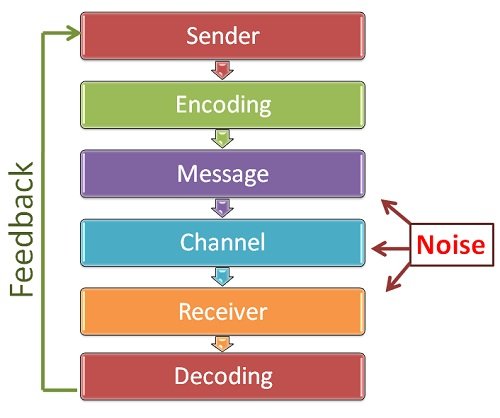Corporate Communication, Scope, Components
Corporate Communication refers to the strategies and practices used by an organization to create, manage, and convey messages to its internal and external stakeholders. It encompasses all communication activities that align the organization’s goals, values, and brand identity with its audiences, including employees, customers, investors, media, and the public. Corporate communication includes internal communication (e.g., employee engagement), external communication (e.g., public relations, branding), crisis communication, and corporate social responsibility (CSR). Its primary objective is to build trust, enhance the organization’s reputation, and ensure a consistent and cohesive flow of information across all platforms and channels.
Scope of Corporate Communication:
1. Internal Communication
Corporate communication involves facilitating information exchange within the organization to ensure alignment with goals and strategies. It includes tools such as newsletters, emails, intranet, and meetings, fostering employee engagement, teamwork, and a strong organizational culture.
2. External Communication
Engaging with external stakeholders like customers, investors, suppliers, and media is a critical part of corporate communication. It includes public relations, marketing communications, and customer interactions, helping build and maintain the organization’s reputation in the market.
3. Brand Management
Corporate communication plays a key role in developing and maintaining the organization’s brand identity. It ensures consistent messaging and representation across various channels to create a strong, recognizable brand that resonates with stakeholders.
4. Public Relations (PR)
Managing relationships with the media, public, and other external audiences is an essential part of corporate communication. PR activities include press releases, media events, and public outreach programs that enhance the organization’s visibility and credibility.
5. Crisis Communication
One of the most critical areas of corporate communication is crisis management. During times of organizational challenges or public controversies, it ensures clear, timely, and accurate communication to minimize reputational damage and rebuild stakeholder trust.
6. Corporate Social Responsibility (CSR)
Communicating CSR initiatives is an important aspect of corporate communication. It involves showcasing the organization’s commitment to social and environmental causes, helping to build goodwill and strengthen community relationships.
7. Investor Relations
Communicating effectively with investors and shareholders is essential to ensure transparency and trust. Corporate communication involves reporting financial performance, strategy updates, and growth prospects to maintain confidence in the organization.
8. Employee Advocacy
Corporate communication encourages employees to act as brand ambassadors. Through training, regular updates, and fostering a shared vision, employees become advocates for the organization, positively influencing its external reputation.
9. Digital Communication
In the digital age, corporate communication encompasses the use of online platforms such as websites, social media, and email marketing. It ensures an organization’s online presence aligns with its overall communication strategy, engaging audiences globally.
Components of Corporate Communication:
1. Internal Communication
Internal communication focuses on sharing information within the organization. It includes:
- Employee newsletters
- Intranet portals
- Emails
- Meetings and briefings
- Employee feedback mechanisms
This component fosters a cohesive work environment, ensures employees are informed, and promotes organizational culture.
2. External Communication
This involves communication with external stakeholders such as customers, suppliers, investors, media, and the public. Tools used include:
- Press releases
- Marketing campaigns
- Annual reports
- Customer newsletters
External communication ensures the organization maintains a positive public image and builds strong stakeholder relationships.
3. Public Relations (PR)
PR manages the organization’s image and reputation in the public domain. Activities include:
- Media relations
- Crisis management
- Event organization
- Community engagement
It ensures the organization communicates effectively during crises and maintains a positive image.
4. Media Relations
This component involves interacting with journalists and media outlets to ensure favorable coverage of the organization. It includes:
- Press conferences
- Media interviews
- Issuing press kits
- Responding to media inquiries
Media relations enhance visibility and credibility.
5. Crisis Communication
Crisis communication handles unexpected situations that may harm the organization’s reputation. Strategies include:
- Preparing crisis management plans
- Issuing timely statements
- Transparent communication with stakeholders
- Monitoring public sentiment
It aims to mitigate damage and restore stakeholder confidence.
6. Branding and Marketing Communication
This involves promoting the organization’s brand and products. Tools include:
- Advertising campaigns
- Social media content
- Public events
- Sponsorships
It aligns brand identity with organizational values to attract and retain customers.
7. Investor Relations
This focuses on communication with investors and financial stakeholders. It involves:
- Financial disclosures
- Quarterly earnings reports
- Investor meetings
- Annual general meetings
Investor relations ensure transparency and build trust.
8. Corporate Social Responsibility (CSR) Communication
CSR communication highlights the organization’s commitment to social and environmental initiatives. It includes:
- CSR reports
- Community outreach updates
- Sustainability initiatives
It builds goodwill and strengthens the organization’s reputation.
9. Digital Communication
This encompasses online communication channels, including:
- Websites
- Social media platforms
- Email marketing
- Blogs and webinars
Digital communication ensures a global reach and real-time engagement.
